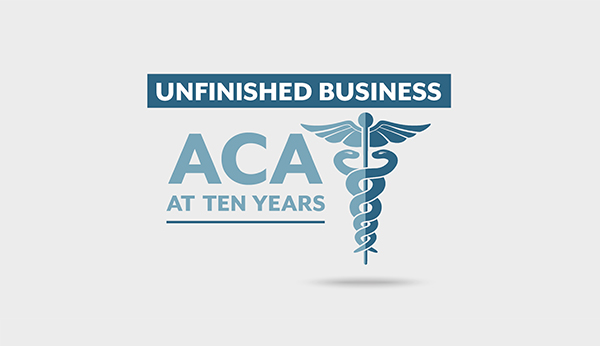
ACA at 10 Years: The Individual Market
In Colorado, those goals have only been partially met. In 2020, all individual market plans meet new quality standards, but enrollment remains unchanged from its pre-ACA levels.
The ACA instituted consumer protections intended to ensure access to quality health insurance. These include coverage for essential health benefits, bans on lifetime limits to the amount insurance plans would spend on a given person, and protections for people with preexisting conditions. These requirements were designed to ensure that insurance plans were accessible for more people and that the plans people purchased covered their real health needs. Protections for preexisting conditions shield the one in four adults (27 percent) under age 65 who would have been ineligible for many insurance plans due to a preexisting condition prior to the ACA.
One of the most visible features of the ACA was the establishment of health insurance marketplaces for each state. These offer a single place for consumers to shop for and purchase health coverage. Colorado’s marketplace, Connect for Health Colorado, enrolled 170,000 people in 2019. Colorado is one of 12 states — plus the District of Columbia—to operate its own online marketplace. The rest use the federal website, healthcare.gov.
But more comprehensive plans, simplified enrollment, and locally driven marketing have not been enough to increase individual market enrollment in Colorado.
The percentage of Coloradans enrolled in the individual market has remained 7 to 8 percent since 2009, according to the Colorado Health Access Survey. By comparison, enrollment in the individual market grew by more than 50 percent nationally after the ACA went into effect. It’s unclear why Colorado’s experience differs, but the high cost of insurance in the state may be to blame.
Creating an Affordable Market
The ACA created Advance Premium Tax Credits (APTCs) to reduce monthly premiums and make individual market insurance plans more affordable. APTCs are available to Coloradans with incomes between 138 and 400 percent of the federal poverty level (FPL) —$25,750 to $103,000 for a family of four in 2020. But subsidies operate on a sliding scale and only take effect after higher-earning Coloradans have spent just under 10 percent of their income on premiums. For many families, that means insurance is a major expense even with subsidies.
And prices have increased over time: Prices in 2019 were nearly double relative to 2014. Approved rates in 2020 brought the first decrease to the individual market post-ACA, but premiums are still up by nearly 50 percent. Individual market enrollees who receive tax credits are largely unaffected by these increases, but those without subsidies remain unprotected. These Coloradans have been the focus of a variety of bills aimed at reducing costs on the individual market.
These high costs are just one reason the individual market remains an area of focus for Colorado policymakers, even though it covers fewer than one in eight residents. The individual market is one of the few insurance markets that the state can directly control. The state Division of Insurance also regulates the small group market and some large employer policies, although most large business policies are exempt from state regulation.
One idea on the table in Colorado in 2020 is the public option. This would require carriers to offer a state-designed plan on the individual market. Hospitals and providers would be required to accept both this insurance and the reimbursements set and paid by the state through the public option. Studies estimate that this plan could lower premiums by an average of 10 percent, with even greater reductions in high-cost areas like the Western Slope.
Colorado is also moving forward with reinsurance, an approach to cost reduction approved during the 2019 legislative session. Through reinsurance, the state “insures” insurers by covering their most expensive bills. Reinsurance reduced individual market premiums by an average of 20 percent in 2020. But it comes at a price — an additional $9 million in state funds for 2021. And while some Coloradans will see their premiums decrease, others — including low-income enrollees on the Front Range — might see a small increase because reinsurance drove down the size of APTCs, causing them to pay more overall.
The public option and reinsurance both focus on lowering individual market costs, but their approaches differ. A public option could save money in the health care system, but it comes with more government involvement and oversight in setting provider prices. Reinsurance doesn’t require more government control, but lower premiums are accomplished not by reducing actual costs, but by shifting costs from individual market enrollees to the state budget and, to a lesser extent, hospitals.
The ACA’s changes to the individual market were meant to modernize coverage and provide affordable and comprehensive options for those without access to other sources of insurance. Today, Coloradans on the individual market have more comprehensive coverage than they did prior to the ACA, but high costs in this market have prohibited more from enrolling. Addressing those costs continues to be a work in progress for the state’s policymakers.
Next week, CHI will look at enrollment changes in the employer-sponsored market.


